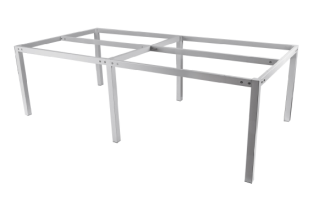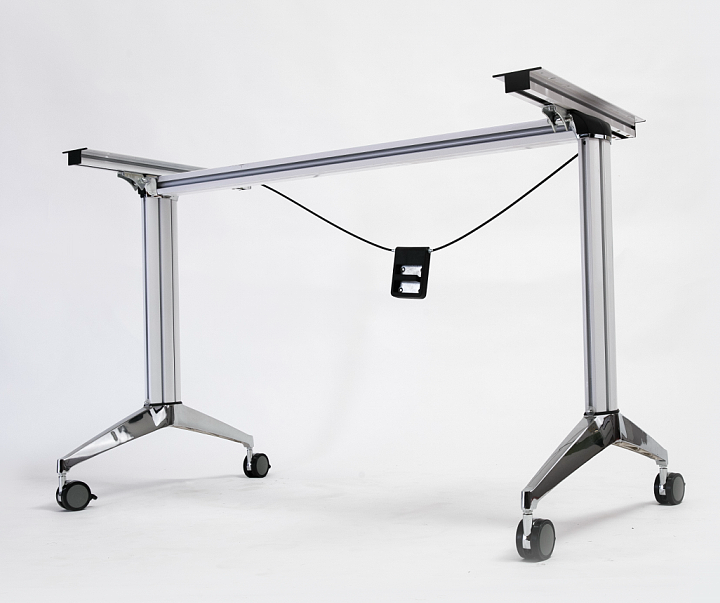The plug-in steel pipe rod is widely used because of its convenient installation and beautiful appearance. However, the depth error of the plug-in type steel pipe rod is difficult to control, and it has been the subject of research by manufacturers. The article comprehensively analyzes the factors affecting the plugging depth of the plug-in steel pipe and gives the empirical parameters.
Influencing factors of steel pipe rod insertion depth The plug-in steel pipe rod has beautiful appearance and convenient installation, and is widely used in urban network reconstruction and construction. With the implementation of the power industry standard "Technical Conditions for the Production of Steel Pipe Rods for Transmission Lines" DL/T646-1998 and the increasingly fierce market competition, manufacturers are paying more and more attention to product quality, especially for the insertion depth error of plug-in steel pipe rods. Influential factors research is more important.
In the manufacturing process, there are many factors affecting the depth of the steel pipe rod insertion, including raw materials, bending dies, stamping dimensional errors, weld size and the geometry of the shaft. This paper analyzes to find out the factors affecting and gives the control parameters.
1 The influence of raw materials 1.1 The influence of the thickness of the plate The thicker the thickness of the plate, the larger the radius of the R is, and the greater the error of the relative depth of the plug; especially when the difference of the thickness of the two plates is large, the difference of the deformation angle R is even more Large, the docking depth is more difficult to control. Therefore, try not to select plates with different thicknesses in adjacent sections (see ).
1.2 Influence of plate thickness error In the national standard GB709 "Size, shape, weight and allowable deviation of hot-rolled steel sheets and strips", the thickness error of the steel plate increases with the increase of the plate thickness and the plate width, and the positive deviation is Between 0.2 and 1.8 mm, the negative deviation is between 0.2 and 2.6 mm. The larger the plate thickness error is, the larger the insertion depth error is, and the more difficult the error is to control; the segment plate thickness error is the same direction error (that is, if the plate thickness error is negative error), the influence on the plug depth error is large. Otherwise they can make up for each other. Under normal circumstances, the allowable deviation of the thickness of the sheet should be controlled within 1% of the thickness of the board.
1.3 Influence of sheet size accuracy The sheet size accuracy directly affects the diameter of the conical rod, and the polygon rod directly affects the margin and side length, which has a great influence on the depth of the plug. In DL/T646 "Technical Conditions for the Manufacturing of Steel Pipe Rods for Transmission Lines", it is stipulated that the deviation of the size of the blanks of the plates is allowed to be 3.0 mm. Our practice proves that it should be controlled at 3.0 mm. 1. Flatness and extension of raw materials. The influence of the rate on the depth of the plugging The straightness and elongation of the raw material have an influence on the depth of the plugging. It is recommended that the same base tower should use the same material and the same calf plate.
At present, the domestic plug-in steel pipe rods are stamped and formed on the bending machine. The larger the opening degree of the lower mold, the larger the rounded corner of the product R (see), the same steel pipe rod should be the same. Lower mold opening degree to ensure that R is the same; the size of the upper mold r arc also affects the size of the R arc. In addition, the size of R affects the flat width A of one side of the polygonal steel tube (see).
The outer diameter of the Do tube, the corresponding margin of the polygon tube, the effective bending radius of R, and the width of the upper mold only affect the interface width of the welded steel pipe rod of the single piece.
The relationship between the fillet R and the flat width A of the edge 3 The influence of the stamping dimensional error on the stamping angle error (see) and the side length error (see) of the steel rod directly affects whether the two sections can be closely matched. The length control must be done on the bending machine and the angle control can be adjusted in the shaping process in addition to the control on the bending machine. The angular error and the side length error are also reflected as the margin error. Under normal circumstances, the side length error should be controlled to ±1.5mm; the margin error should be controlled to ±ZV100. The influence of the punching angle error 4 The influence of the weld size 4. The influence of the plate misalignment on the punching side length error 4. The effect on the interface gap directly affects the margin of the interface gap. Should be strictly controlled within 1.0mm.
4. Influence of weld width When using submerged arc welding, the weld width c should be controlled between 9 and 29 mm without beveling; in the case of beveling, the weld width should be controlled at 5~ Between 15mm (see).
4. The influence of the weld height is generally taken as the lower section (ie, the section that is inserted inside), and the weld seam height is 0~3, which is preferably polished. The flat length should be 1.5D+200mm. The upper section (that is, the section plugged in the outside) is mainly considering strength and aesthetic problems, and has almost no influence on the insertion depth. Generally, it should be controlled at a height of 3mm. In the range of 25mm length of the weld, the residual height error of the weld is 2.0mm. 4. The straightness of the weld bead is straight within the length of any 300mm continuous weld, weld The straightness of the edge along the axial direction of the weld should be controlled below 3.
5 The influence of the geometrical dimensions of the rod 5.1 In the case of the same pair of margins, the more the number of sides, the easier it is to control the relative depth of the plug. Generally, octagonal, dodecagonal and hexagonal shapes are used. The larger the rod diameter, the more the number of sides should be selected.
The larger the misalignment of the W plate is, the more difficult it is to plug into the bit 16 (general control 3llsh5g2H (|T straight line straightness, the more appropriate to control the depth of the plug, the straightness of the bar is generally controlled within Lg / (000mm).
5.3 The smaller the taper of the rod, the more difficult it is to control the depth of the plug. Under normal circumstances, the taper of the rod should be 1/60~1/50. The minimum should be 1/77 or the depth of the plug can not be controlled; the maximum should be 1/45, otherwise the shape of the rod is not beautiful.
6 Calculation of plug depth 6.2 Calculation of plug depth (see) Plug depth, mm; upper end outer diameter, mm lower upper diameter, mm upper plate thickness, mm taper, mm; gap, mm. Consider the above various gaps that affect the plug depth factor. Under normal circumstances, A takes (0.11~0.15)t, the more the number of sides and the thinner the plate thickness, it is better to take a smaller value.
7 Conclusion The influence of raw material size, performance, mold shape and machining accuracy on the depth of the steel pipe rod insertion is always objective. In order to meet the requirements of the technical requirements for steel pipe manufacturing, that is, the allowable deviation of the rod body insertion depth is one L/10, and the allowable deviation of the rod body length is +2Lg/1000, it is necessary to carefully summarize various factors affecting the depth of the steel pipe rod insertion. And strictly controlled.
In the general case of the upper and lower sections of the plug-in pole, the theoretical plugging depth should be 1.5 times the maximum inner diameter of the outer nesting section, and the actual plugging depth is 1.35 to 1.5 times the maximum inner diameter of the outer nesting section. In the design of the steel pipe rod, in addition to comprehensively considering the above-mentioned influencing factors to determine the theoretical plug depth dimension, it should also be considered to leave about 0.3 times the outer section thickness gap between the upper and lower sections in the margin direction to eliminate the above error.
(Continued from page 32) R*=0.678A calculation error is 11.11%. 2.4 Calculation of a substation composite grounding grid *m (measured). Try to estimate the grounding resistance value.
Using the computer numerical calculation program GROUND jointly developed by Guangxi University and Guangxi Electric Power Industry Bureau, the grounding resistance of the grounding grid is Rc = 2.933; the calculation error of the grounding resistance R11C=2.903A calculated by the formula (2) is 1.02%; The error calculated by equation (1) is 9.83%. 3 Conclusion 3.1 The grounding resistance calculation formula (1) recommended by China's power industry standard "grounding of AC electrical equipment" is used to calculate the grounding resistance of the horizontal grounding grid without vertical grounding pole. It is accurate; it is used to calculate the grounding resistance of a composite grounding grid with more long vertical grounding poles. 3.2 The grounding grid grounding resistance calculation formula (2) extended in this paper is applicable to both horizontal grounding grids and composite grounding grids. And when the length 1 of a single vertical grounding pole is much larger than the side length of the equivalent square of the grounding grid (such as /=2.5TS) and the total length of the vertical grounding is greater than the total length of the horizontal grounding pole (such as 1.=1.67LS), The calculation error is still less than
Our Metal Table Frame are ideal for the office environment and are strong and durable. Available in a wide range of standard sizes and colour.
Owing to their features like excellent finish, durability and elegant designs, these metal frames are extensively demanded for various purposes.
These table frames are manufactured by skilled professionals using premium quality metal with powder coating as per the set industry standards.
We provide this frame in customized options as per the needs of customers such as sizes, thicknesses,color and designs to ensure your maximum satisfaction.


Table Frame,Metal Table Frame,Steel Table Frame,Dining Table Frame,Office Table Frame
Foshan Nanhai Xin Jianwei Hardware Co., Ltd , https://www.aaghardware.com